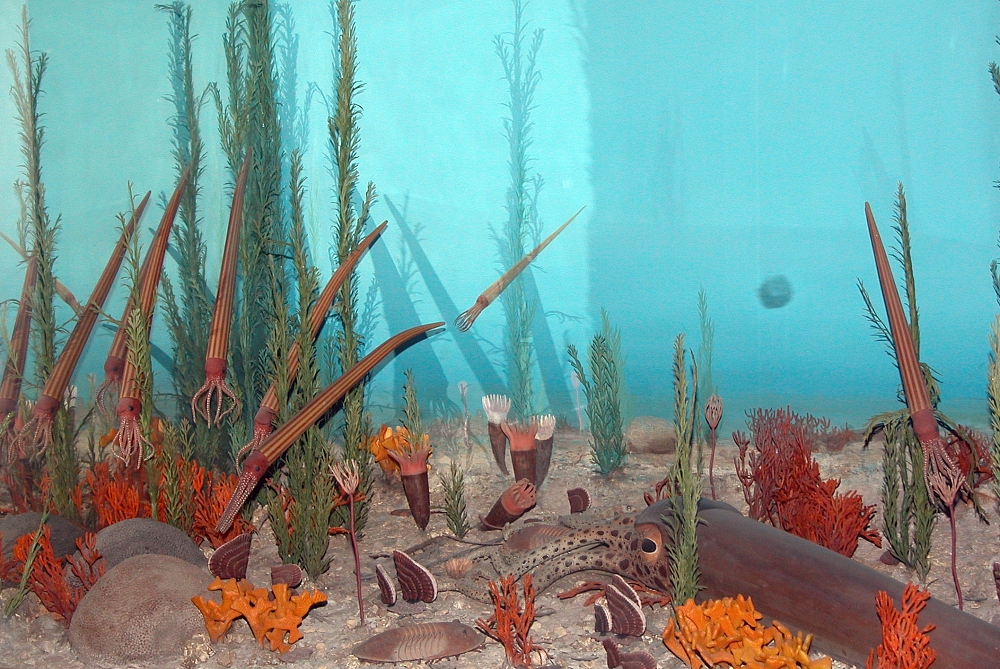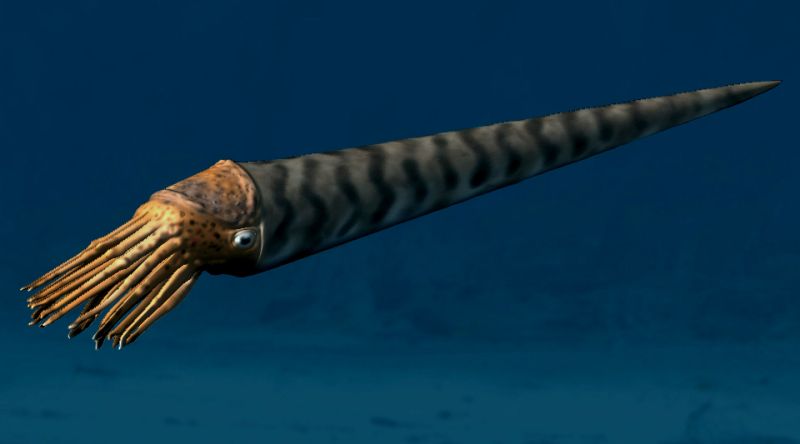|
Trigonoconcha
''Trigonoconcha'' is an extinct genus of bivalve in the extinct family Praenuculidae. The genus is one of eleven genera in the subfamily Praenuculinae. It is one of three Praenuculinae genera known solely from Late Ordivician, Caradoc epoch, fossils found in South America. ''Trigonoconcha'' currently contains a single accepted species, ''Trigonoconcha acuta''. Description ''Trigonoconcha acuta'' was first described in 1999 by Teresa M. Sánchez from fossils from sediments of the late Middle Ordivician, Caradocian aged Don Braulio Formation. The formation outcrops on the flank of Sierra de Villicum in the Argentina precordillera.The Paleobiology database "Sierra de Villicum" entry accessed 11 February 2012 The shells of ''Trigonoconcha'' ha ... [...More Info...] [...Related Items...] OR: [Wikipedia] [Google] [Baidu] |
Praenuculinae
Praenuculinae is an extinct subfamily of prehistoric bivalves in the family Praenuculidae. Praenuculinae species lived from the middle Ordovician through the late Devonian.The Paleobiology Database Praenuculinae entry accessed 5 February 2012.The Paleobiology Database ''Praenucula'' entry accessed 5 February 2012. Praenuculinae fossils are found in Europe, Africa, North America and South America, [...More Info...] [...Related Items...] OR: [Wikipedia] [Google] [Baidu] |
Praenuculidae
Praenuculidae is an extinct family (biology), family of prehistoric bivalves in the superfamily (taxonomy), superfamily Nuculoidea. Praenuculidae species lived from the early Ordovician, Arenig, Arenig stage through the Early Devonian Emsian, Emsian stage.The Paleobiology Database Praenuculidae entry accessed 11 January 2012 Praenuculidae fossils are found worldwide, present on every continent except Antarctica. Species in this family are thought to have been Sessility (zoology), sessile, attached to the substrate in shallow infaunal marine water environments, where they formed shells of an aragonite composition. The family Praenuculidae was named by A. Lee McAlester in 1969. Description Praenuculidae first eme ...[...More Info...] [...Related Items...] OR: [Wikipedia] [Google] [Baidu] |
Caradoc (age)
The Ordovician ( ) is a geologic period and system, the second of six periods of the Paleozoic Era. The Ordovician spans 41.6 million years from the end of the Cambrian Period million years ago (Mya) to the start of the Silurian Period Mya. The Ordovician, named after the Welsh tribe of the Ordovices, was defined by Charles Lapworth in 1879 to resolve a dispute between followers of Adam Sedgwick and Roderick Murchison, who were placing the same rock beds in North Wales in the Cambrian and Silurian systems, respectively. Lapworth recognized that the fossil fauna in the disputed strata were different from those of either the Cambrian or the Silurian systems, and placed them in a system of their own. The Ordovician received international approval in 1960 (forty years after Lapworth's death), when it was adopted as an official period of the Paleozoic Era by the International Geological Congress. Life continued to flourish during the Ordovician as it did in the earlier Cambrian Perio ... [...More Info...] [...Related Items...] OR: [Wikipedia] [Google] [Baidu] |
Similodonta
''Similodonta'' is an extinct genus of early bivalve in the extinct family Praenuculidae. The genus is one of eleven genera in the subfamily Praenuculinae. ''Similodonta'' is known from Middle Ordovician through Middle Silurian fossils found in Europe and North America. The genus currently contains eight accepted species, ''Similodonta ceryx'', ''Similodonta collina'', ''Similodonta djupvikensis'', ''Similodonta magna'', ''Similodonta recurva'', ''Similodonta spjeldnaesi'', ''Similodonta wahli'' and the type species ''Similodonta similis''. Description ''Similodonta'' is a small bivalve which was first described in 1964 by Helen Soot-Ryen in an ''Arkiv för Mineralogi och Geologi, Kungliga Svenska Vetenskapsakademien'' paper. Generally the shells of ''Similodonta'' are rounded on the ventral sides of the shell and triangular on the dorsal sides. The triangular shape on the dorsal side is formed by the sharp angle at which the anterior and posterior hinge edges meet at the ... [...More Info...] [...Related Items...] OR: [Wikipedia] [Google] [Baidu] |
Ordovician Argentina
The Ordovician ( ) is a geologic period and system, the second of six periods of the Paleozoic Era. The Ordovician spans 41.6 million years from the end of the Cambrian Period million years ago (Mya) to the start of the Silurian Period Mya. The Ordovician, named after the Welsh tribe of the Ordovices, was defined by Charles Lapworth in 1879 to resolve a dispute between followers of Adam Sedgwick and Roderick Murchison, who were placing the same rock beds in North Wales in the Cambrian and Silurian systems, respectively. Lapworth recognized that the fossil fauna in the disputed strata were different from those of either the Cambrian or the Silurian systems, and placed them in a system of their own. The Ordovician received international approval in 1960 (forty years after Lapworth's death), when it was adopted as an official period of the Paleozoic Era by the International Geological Congress. Life continued to flourish during the Ordovician as it did in the earlier Cambri ... [...More Info...] [...Related Items...] OR: [Wikipedia] [Google] [Baidu] |
Ordovician Animals Of South America
The Ordovician ( ) is a geologic period and system, the second of six periods of the Paleozoic Era. The Ordovician spans 41.6 million years from the end of the Cambrian Period million years ago (Mya) to the start of the Silurian Period Mya. The Ordovician, named after the Welsh tribe of the Ordovices, was defined by Charles Lapworth in 1879 to resolve a dispute between followers of Adam Sedgwick and Roderick Murchison, who were placing the same rock beds in North Wales in the Cambrian and Silurian systems, respectively. Lapworth recognized that the fossil fauna in the disputed strata were different from those of either the Cambrian or the Silurian systems, and placed them in a system of their own. The Ordovician received international approval in 1960 (forty years after Lapworth's death), when it was adopted as an official period of the Paleozoic Era by the International Geological Congress. Life continued to flourish during the Ordovician as it did in the earlier Cambrian Per ... [...More Info...] [...Related Items...] OR: [Wikipedia] [Google] [Baidu] |
Ordovician Bivalves
The Ordovician ( ) is a geologic period and system, the second of six periods of the Paleozoic Era. The Ordovician spans 41.6 million years from the end of the Cambrian Period million years ago (Mya) to the start of the Silurian Period Mya. The Ordovician, named after the Welsh tribe of the Ordovices, was defined by Charles Lapworth in 1879 to resolve a dispute between followers of Adam Sedgwick and Roderick Murchison, who were placing the same rock beds in North Wales in the Cambrian and Silurian systems, respectively. Lapworth recognized that the fossil fauna in the disputed strata were different from those of either the Cambrian or the Silurian systems, and placed them in a system of their own. The Ordovician received international approval in 1960 (forty years after Lapworth's death), when it was adopted as an official period of the Paleozoic Era by the International Geological Congress. Life continued to flourish during the Ordovician as it did in the earlier Cambrian Peri ... [...More Info...] [...Related Items...] OR: [Wikipedia] [Google] [Baidu] |
National University Of Córdoba
The National University of Córdoba ( es, Universidad Nacional de Córdoba,) is an institution of higher education in the city of Córdoba, Argentina. Founded in 1613, the university is the oldest in Argentina, the third oldest university of the Americas, with the first university being the National University of San Marcos (Peru, 1551) and the second one, Saint Thomas Aquinas University (Colombia, 1580). Since the early 20th century it has been the second largest university in the country (after the University of Buenos Aires) in terms of the number of students, faculty, and academic programs. As the location of the first university founded in the land that is now Argentina, Córdoba has earned the nickname ''La Docta'' (roughly translated, "The Wise"). The National University of Córdoba is financially supported by Argentinian taxpayers, but - like all Argentine national universities - it is autonomous. This means it has the autonomy to manage its own budgets, elect its own a ... [...More Info...] [...Related Items...] OR: [Wikipedia] [Google] [Baidu] |
Paleontology
Paleontology (), also spelled palaeontology or palæontology, is the scientific study of life that existed prior to, and sometimes including, the start of the Holocene epoch (roughly 11,700 years before present). It includes the study of fossils to classify organisms and study their interactions with each other and their environments (their paleoecology). Paleontological observations have been documented as far back as the 5th century BC. The science became established in the 18th century as a result of Georges Cuvier's work on comparative anatomy, and developed rapidly in the 19th century. The term itself originates from Greek (, "old, ancient"), (, (gen. ), "being, creature"), and (, "speech, thought, study"). Paleontology lies on the border between biology and geology, but differs from archaeology in that it excludes the study of anatomically modern humans. It now uses techniques drawn from a wide range of sciences, including biochemistry, mathematics, and enginee ... [...More Info...] [...Related Items...] OR: [Wikipedia] [Google] [Baidu] |
Holotype
A holotype is a single physical example (or illustration) of an organism, known to have been used when the species (or lower-ranked taxon) was formally described. It is either the single such physical example (or illustration) or one of several examples, but explicitly designated as the holotype. Under the International Code of Zoological Nomenclature (ICZN), a holotype is one of several kinds of name-bearing types. In the International Code of Nomenclature for algae, fungi, and plants (ICN) and ICZN, the definitions of types are similar in intent but not identical in terminology or underlying concept. For example, the holotype for the butterfly '' Plebejus idas longinus'' is a preserved specimen of that subspecies, held by the Museum of Comparative Zoology at Harvard University. In botany, an isotype is a duplicate of the holotype, where holotype and isotypes are often pieces from the same individual plant or samples from the same gathering. A holotype is not necessaril ... [...More Info...] [...Related Items...] OR: [Wikipedia] [Google] [Baidu] |
Vertex (geometry)
In geometry, a vertex (in plural form: vertices or vertexes) is a point where two or more curves, lines, or edges meet. As a consequence of this definition, the point where two lines meet to form an angle and the corners of polygons and polyhedra are vertices. Definition Of an angle The ''vertex'' of an angle is the point where two rays begin or meet, where two line segments join or meet, where two lines intersect (cross), or any appropriate combination of rays, segments, and lines that result in two straight "sides" meeting at one place. :(3 vols.): (vol. 1), (vol. 2), (vol. 3). Of a polytope A vertex is a corner point of a polygon, polyhedron, or other higher-dimensional polytope, formed by the intersection of edges, faces or facets of the object. In a polygon, a vertex is called " convex" if the internal angle of the polygon (i.e., the angle formed by the two edges at the vertex with the polygon inside the angle) is less than π radians (180°, two right angl ... [...More Info...] [...Related Items...] OR: [Wikipedia] [Google] [Baidu] |
Precordillera
Precordillera is a Spanish geographical term for hills and mountains lying before a greater range, foothills. The term is derived from ''cordillera'' (mountain range)—literally "pre-mountain range"—and applied usually to the Andes. Some places usually called precordillera are: *Andean mountains east of the main ranges of Andes in Argentina. It is separated from the much higher Frontal Cordillera to the west by Uspallata Valley in Argentina. Precordillera mountains reach around 3,000 m a.s.l. in Sierras de Villavicencio. *Used all over Chile from north to south as a morphological unit lying just between the Andes and the Intermediate Depression. See also * Geological history of the precordillera terrane The Precordillera terrane of western Argentina is a large mountain range located southeast of the main Andes mountain range. The evolution of the Precordillera is noted for its unique formation history compared to the region nearby. The Cambrian- ... * References {{Geo-term ... [...More Info...] [...Related Items...] OR: [Wikipedia] [Google] [Baidu] |




